Thrilling Adventure: Whale Watching Experience in Sri Lanka
Nestled like a teardrop in the Indian Ocean, Sri Lanka beckons travelers with its kaleidoscopic tapestry of culture, history, and natural beauty. Known as the "Pearl of the Indian Ocean," this island nation is a treasure trove waiting to be discovered. From lush tea plantations carpeting the hills to pristine beaches lapped by turquoise waters, Sri Lanka captivates visitors with its breathtaking landscapes and warm hospitality.
Sri Lanka
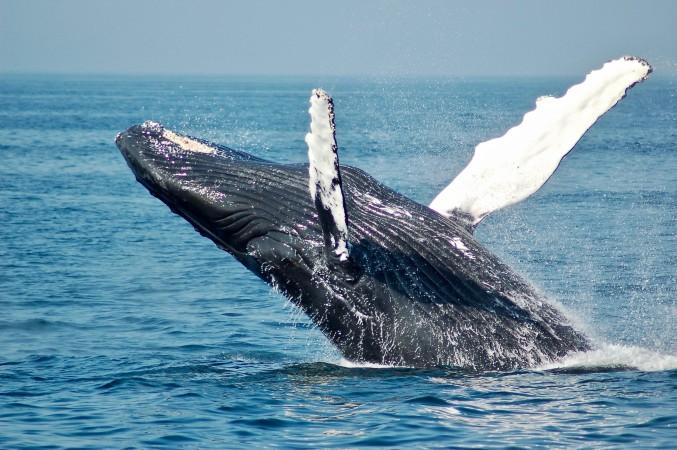
Why Choose Sri Lanka for Your Next Adventure?
Sri Lanka's allure extends far beyond its stunning scenery; it's a haven where ancient traditions mingle harmoniously with modern delights. For history buffs, the Cultural Triangle unveils a rich heritage dating back millennia, boasting UNESCO World Heritage Sites like the ancient city of Anuradhapura and the rock fortress of Sigiriya. Each site tells a story of dynasties, craftsmanship, and spiritual devotion, offering a glimpse into Sri Lanka's illustrious past.
Beyond its historical marvels, Sri Lanka entices nature enthusiasts with its biodiversity. The island teems with wildlife sanctuaries where elephants roam freely and leopards stealthily prowl. The Yala National Park, one of the country's most famous reserves, promises thrilling safaris amidst a backdrop of untamed wilderness.
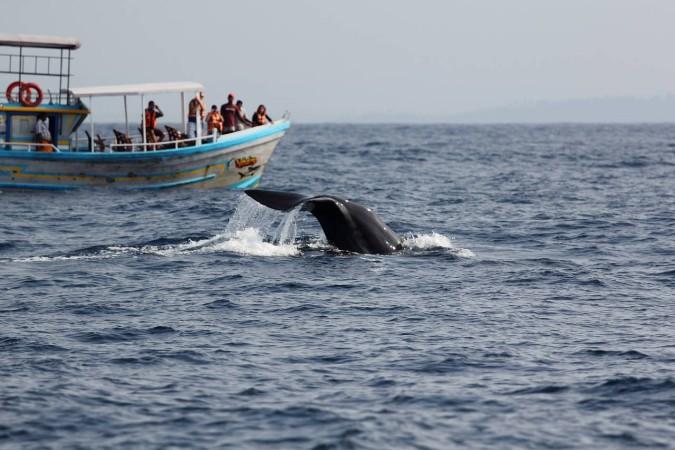
Chasing Whale in Sri Lanka - © gather
Whale Watching in Sri Lanka: A Marine Safari Adventure
Sri Lanka's coastal waters are renowned as one of the world's best destinations for whale watching, offering an unparalleled marine safari experience. The island's southern coast, particularly Mirissa, Trincomalee, and Kalpitiya, beckons adventurers seeking glimpses of majestic marine giants in their natural habitat.
Mirissa
Nestled along the southern coast, Mirissa is a hotspot for whale watching enthusiasts. Venture into the cerulean waters aboard sturdy vessels, guided by seasoned experts who know these seas like the back of their hand. As you scan the horizon, the thrill of spotting a pod of playful dolphins or the graceful arc of a blue whale's dive is an experience that lingers in memory forever.
Trincomalee
On the eastern shores, Trincomalee emerges as another jewel for marine wildlife enthusiasts. Here, the deep waters of the Indian Ocean teem with diverse species, including sperm whales and playful spinner dolphins. The serene beauty of Trincomalee's coastline, coupled with its rich maritime history, adds a unique charm to every whale watching expedition.
Kalpitiya
Situated on the northwestern coast, Kalpitiya offers a more off-the-beaten-path experience for whale watchers. Embark on boat tours that take you through the waters of the Kalpitiya Peninsula, where encounters with pods of dolphins and occasional sightings of elusive sperm whales create moments of pure awe and wonder.
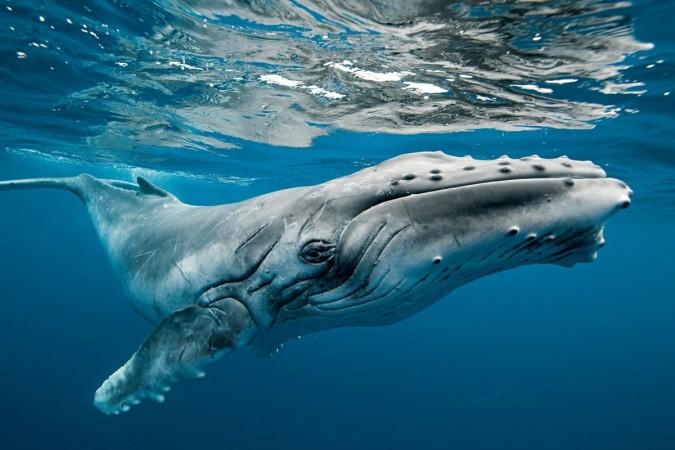
Blue Whale in Sri Lanka waters - © TinTuc News
What to Know Before Planning Your Whale Watching Trip?
Types of Dolphins and Whales in Sri Lanka
Sri Lanka's waters host a range of whales and dolphins, attracting enthusiasts and researchers globally. Dominant among these are blue whales and sperm whales, especially visible from Mirissa and Trincomalee. Dolphin species like acrobatic spinner dolphins and sociable bottlenose dolphins also frequent these waters. The migration patterns of these marine mammals, aligned with the seasonal shifts from November to April, provide predictable sightings. This biological diversity and temporal predictability make Sri Lanka's marine environment a vital study area and a hotspot for whale and dolphin watching.
What Are the Chances of Spotting a Whale on a Whale Watching Tour?
During the months of November to April, the likelihood of encountering whales is 98%. However, because these are wild species, sightings are not assured. Commonly observed species include blue whales, which are most frequent, along with sperm, fin, Bryde's, and short-finned whales. Observers might also spot dolphins and, less frequently, killer whales and whale sharks. Additionally, sightings of turtles and flying fish can occur during these expeditions.
How Long Does Whale Watching Last?
Whale watching trips in Mirissa typically last between 3 and 5 hours, with an average duration of 4 hours. Tours commence before 7 a.m. from Mirissa Harbor, and guests should arrive between 6:00 and 6:30 a.m. Morning tea, a breakfast package, and snacks are provided during the tour.
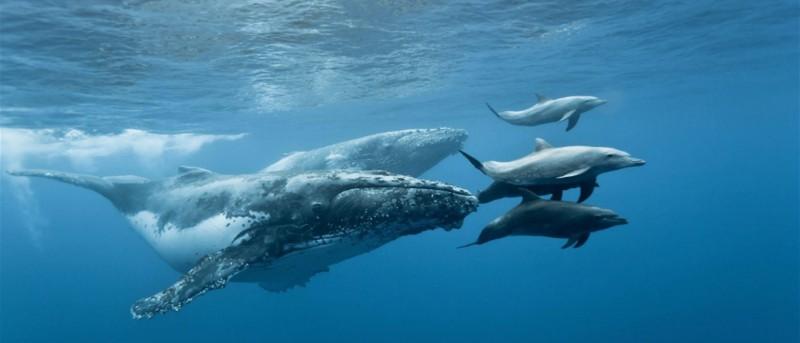
Dolphins and Whale spotted in Sri Lanka - © Change.org
Best Time to Go Whale Watching in Sri Lanka
Timing is crucial for an unforgettable whale watching experience in Sri Lanka. The island's favorable geographic location ensures that whale watching is possible almost year-round, with different seasons offering varying marine spectacles:
- December to April: This period marks the peak whale watching season along Sri Lanka's southern and western coasts. Calm seas and clear skies create ideal conditions for spotting blue whales, the largest creatures on earth, as they migrate through these waters.
- May to September: As the southwest monsoon winds bring rain to the southwestern regions, whale watching enthusiasts turn their attention to the northeastern coast of Trincomalee. Here, the sea remains calm, making it an excellent time to observe sperm whales and playful spinner dolphins.
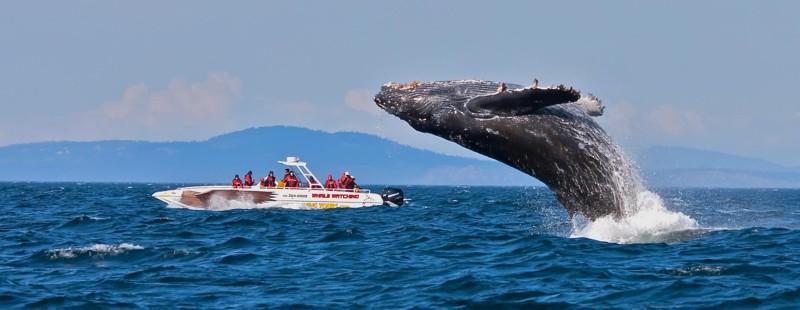
Whale watching - © gather
Tips for an Unforgettable Whale Watching Experience
To make the most of your whale watching adventure in Sri Lanka, consider these tips:
- Best Viewing Times: Arrive early in the morning when marine life is most active. Calm seas and favorable weather conditions enhance visibility and increase your chances of spotting whales and dolphins.
- What to Bring: Pack essentials such as sunscreen, a hat, sunglasses, and a light jacket. Binoculars can also enhance your viewing experience, allowing you to observe marine life from a distance.
- Respect Marine Life: Follow guidelines provided by your tour operator to minimize disturbance to whales and dolphins. Maintain a respectful distance and avoid sudden movements or loud noises that could startle marine animals.
- Photography Tips: Capture stunning moments by adjusting your camera settings for marine photography. Consider using a telephoto lens to zoom in on distant whales and fast shutter speeds to capture action shots.
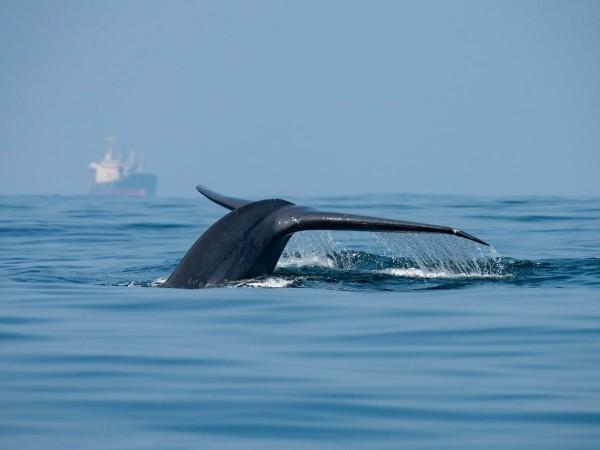
Blue Whale spotted in Sri Lanka - © NhungDieuThuVi
Cultural Significance of Whales in Sri Lankan Society
Whales hold a significant place in Sri Lankan culture, symbolizing both the natural wealth and spiritual depth of the island. Their presence in Sri Lankan waters has profoundly influenced local customs, beliefs, and traditions, shaping the community's relationship with the ocean.
Spiritual and Mythological Significance
In coastal communities across Sri Lanka, whales are revered as guardians of the ocean, embodying grace and power. Folklore and myths depict whales as benevolent beings that bring luck and protect fishermen during their voyages.
Economic Impact on Local Communities
The whale watching industry has become integral to the local economy, particularly in towns like Mirissa and Trincomalee. This economic reliance has cultivated a cultural reverence for whales, incorporating them into local traditions and festivals. Events often celebrate whales, emphasizing conservation and sustainable practices.
Educational and Awareness Initiatives
Acknowledging the cultural significance of whales, local NGOs and schools have launched educational programs. These initiatives aim to educate younger generations about marine life conservation, blending traditional narratives with scientific knowledge. This holistic approach fosters a deeper appreciation for whales' ecological and cultural roles.
Artistic Expression
Whales inspire local art and literature, symbolizing freedom, mystery, and the interconnectedness of nature. Artisans create paintings, sculptures, and crafts depicting whales, which are popular as souvenirs among tourists. This artistic representation further spreads the cultural significance of whales. Through these cultural expressions, whales transcend their biological importance to become a cornerstone of Sri Lanka's heritage, symbolizing its natural beauty and spiritual richness. This profound cultural connection enhances conservation efforts, promoting responsible tourism practices that uphold the marine environment's integrity.
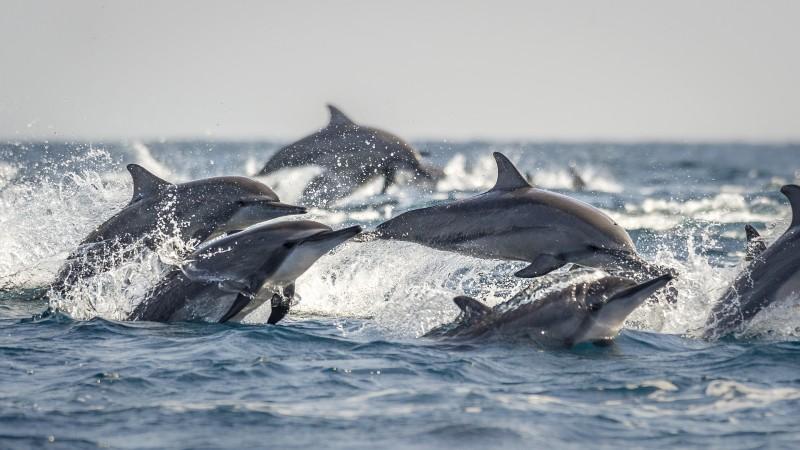
School of Dolphin jumping from the water - © Panda.org
Conservation Efforts and Sustainable Tourism
In Sri Lanka, conservation efforts to protect marine life are robust and critical due to the region's biodiversity. These initiatives are led by local and international organizations such as the Marine Environment Protection Authority (MEPA) and Whale and Dolphin Conservation (WDC). They work together to research marine species, protect habitats, and ensure sustainable practices in the whale watching industry. Key initiatives include strict regulations on maritime activities, especially those involving large vessels that pose threats to marine creatures through strikes or pollution. Public education programs teach locals and tourists about the importance of preserving marine environments and their species.
Sri Lanka also engages in tagging and monitoring programs to track the movements and health of marine species, particularly whales. This data is crucial for understanding migration patterns and the impact of environmental changes on these creatures. By integrating scientific research with conservation actions, Sri Lanka aims to maintain its marine biodiversity while supporting eco-tourism as a sustainable economic venture.
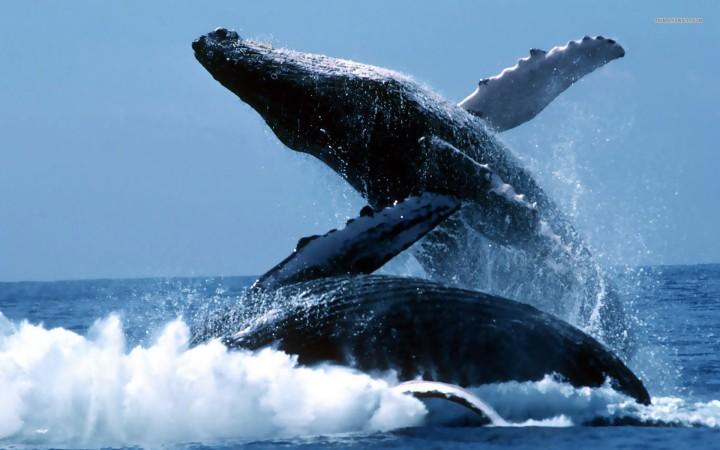
Marine life conservation efforts - © AnimalHDWalls.com
Participating in Conservation Efforts with Tweet Tours
Explore Sri Lanka's Mirissa Beach with our comprehensive whale watching expedition, offering more than just marine life encounters. Our tours include wildlife interactions and visits to local attractions, ensuring a diverse itinerary that showcases both natural beauty and cultural richness. Tweet Tours prioritizes sustainable, ethical, and informative tourism methods. Our itineraries guide visitors through Sri Lanka's enchanting landscapes, providing not just a service but an educational journey that respects the marine environment.
Our mission is to preserve wildlife and their habitats for future generations. Participants are encouraged to engage respectfully with nature, following ethical guidelines that minimize impact on wildlife and ecosystems. For detailed information on our tours and unique experiences, visit TweetTours.com or contact our Call Center at 1300-739-652 to Discover the specifics of our itineraries and ensure every participant enjoys a memorable and meaningful journey.
"You don’t need to be a marine biologist to contribute meaningfully to marine conservation,” said Dr. Asha de Vos, Founder & Executive Director of Oceanswell, in an interview with Mares.
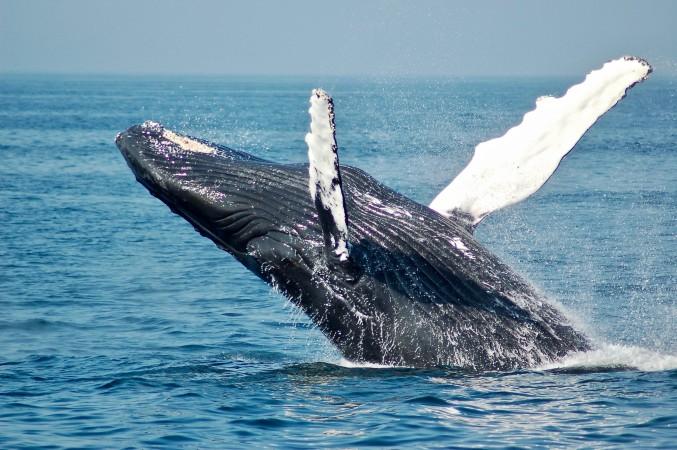
Whale Watching with Tweet Tours - © gather
Conclusion
Whale watching in Sri Lanka offers a mesmerizing blend of natural wonders and cultural experiences. Whether you're drawn to the thrill of spotting whales in their natural habitat or captivated by Sri Lanka's rich heritage and culinary delights, this island nation promises an unforgettable journey for every traveler. Plan your whale watching adventure today and immerse yourself in the beauty and charm of Sri Lanka, where the magic of the ocean meets the warmth of its people.
Articles for you

Experience Aboard The RV Indochine II - A Mekong Cruise With Tweet World Travel
The RV Indochine II is a luxury river cruise ship, offering an unforgettable journey through many attractions along the Mekong River. Built in 2017, this upscale vessel combines colonial elegance with modern conveniences to create a comfortable yet stylish environment for its crew and passengers. The ship’s intimate size makes it ideal for those seeking a more personal cruising experience while exploring Vietnam and Cambodia rich culture, scenery, and heritage. Whether you're gazing at the landscape from your private balcony or enjoying authentic local cuisine, RV Indochine II promises an exotic adventure like no other.

Witness Stilt Fishing In Sri Lanka: An Eco-Tourism Experience
Sri Lanka, renowned for its stunning beaches and rich cultural heritage, harbors a unique tradition that has captivated travelers for centuries: stilt fishing. This ancient practice, passed down through generations of coastal communities, blends artistry with necessity, offering a glimpse into a way of life intimately connected to the island's coastal rhythms. Stilt fishing in Sri Lanka isn't merely a means to catch fish; it's a cultural emblem, embodying the resilience and ingenuity of Sri Lanka's fishing communities.

Make Your Trip Stress-Free With The Tweet Trip App
Embark on your next adventure with confidence by downloading the Tweet Trip App, available for both iOS and Android. This essential travel companion allows you to view your detailed itinerary, stay connected with your tour guide and fellow travelers, receive real-time updates, and provide feedback effortlessly. With features like in-app messaging, emergency assistance, and location sharing, the Tweet Trip App ensures you travel smarter, stay connected, and enjoy a seamless, worry-free journey. Get started today and make the most of your travel experience with Tweet World Travel.

Pedal Through Paradise: Unveiling Cambodia's Hidden Gems on Two Wheels
The gentle whir of bicycle wheels mingles with the distant chants of monks as you glide past emerald rice paddies stretching to the horizon. This is Cambodia - a sensory explosion waiting to be experienced on two wheels. At Tweet Tours, we believe there's no better way to immerse yourself in the Kingdom of Wonder than by bicycle.
Cambodia isn't just a destination; it's a living, breathing tapestry of ancient wonders, natural beauty, and vibrant culture. Our carefully crafted cycling tours take you beyond the typical tourist haunts, offering a unique perspective on this captivating country. Ready to clip in and discover the magic of Cambodia? Let's ride!

Trekking in the Himalayas: A Journey Through Nepal's Majestic Peaks
The Himalayas rise from the earth like colossal guardians, their snow-capped peaks piercing the sky in a display of nature's raw power and beauty. Nepal, nestled at the heart of this mountain range, serves as the gateway to some of the most breathtaking trekking experiences on the planet. Here, the air is crisp and thin, filled with the promise of adventure and the whispers of ancient tales.
With Tweet Tours, as you set foot on these hallowed trails, you're not just a traveler - you're a modern-day explorer, following in the footsteps of legendary mountaineers and age-old traders. Each step takes you further into a world where nature reigns supreme and human resilience is tested against the backdrop of some of the world's highest peaks.
From the moment your boots touch the ground in Kathmandu, you'll feel the pull of the mountains. The bustling streets of the capital, with their sensory overload of sights, sounds, and smells, soon give way to serene mountain paths where the only soundtrack is the crunch of gravel underfoot and the distant tinkling of yak bells.

Exploring Mui Ne's Wonders: Unique Attractions & Local Dishes
Nestled along the southeastern coast of Vietnam, Mui Ne emerges as a captivating gem, blending natural wonders with cultural richness. Renowned for its stunning landscapes and unique attractions, Mui Ne beckons travelers seeking both relaxation and adventure in equal measure. Mui Ne's renowned beach dunes, bustling fishing towns, and excellent local food await exploration at every turn.
The allure of Mui Ne lies not only in its pristine beaches and crystal-clear waters but also in its diverse range of activities catering to every traveler's whims. Whether you're drawn to thrilling water sports like kitesurfing and windsurfing on its dynamic shores or seeking tranquility amidst the picturesque Fairy Stream, Mui Ne promises an unforgettable journey filled with discovery.
